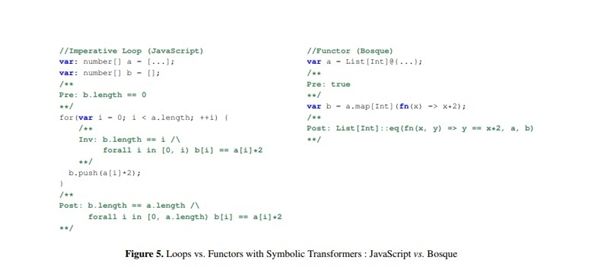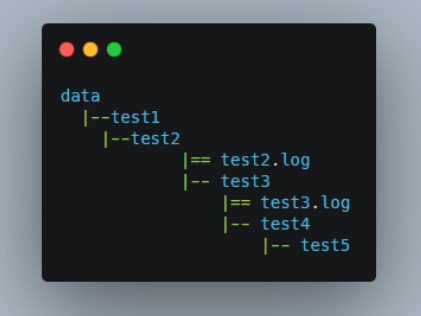探讨Java中超类的实现和多态特性
 发布于2024-12-29 阅读(0)
发布于2024-12-29 阅读(0)
扫一扫,手机访问

超类的本质
在 Java 中,超类(superclass)是指派生类(derived class)的父类。超类为派生类提供了通用的行为和属性,而派生类可以继承并扩展超类。
超类的主要作用有:
- 定义公共行为和属性,供派生类继承。
- 提供抽象方法,以便派生类可以实现自己的具体行为。
- 定义受保护的访问权限,以便派生类可以访问超类的受保护成员。
- 定义 final 方法,以便派生类无法覆盖超类的行为。
多态的实现艺术
多态的实现主要依赖于继承和方法重写。继承允许派生类从超类继承行为和属性,而方法重写则允许派生类修改超类中继承的方法。
多态的实现艺术体现在以下几个方面:
- 派生类可以覆盖超类的方法,并提供自己的具体实现。
- 派生类可以调用超类的方法,也可以调用自己重写的方法。
- 派生类对象可以被赋值给超类变量,并可以使用超类类型的引用来调用方法。
演示代码
class Animal {
public void eat() {
System.out.println("Animal is eating.");
}
}
class Dog extends Animal {
@Override
public void eat() {
System.out.println("Dog is eating.");
}
}
class Cat extends Animal {
@Override
public void eat() {
System.out.println("Cat is eating.");
}
}
public class Main {
public static void main(String[] args) {
Animal animal = new Dog();
animal.eat(); // prints "Dog is eating."
Animal anotherAnimal = new Cat();
anotherAnimal.eat(); // prints "Cat is eating."
}
}
在这段代码中,Dog 和 Cat 类都继承了 Animal 类,并重写了 eat() 方法。当 animal 变量被赋予 Dog 对象时,调用 eat() 方法将打印 "Dog is eating."。而当 anotherAnimal 变量被赋予 Cat 对象时,调用 eat() 方法将打印 "Cat is eating."。
Conclusion
多态是 Java 中面向对象编程的重要特性,它允许子类对象以超类类型被引用和使用。通过继承和方法重写,多态可以实现派生类对超类的行为和属性的扩展和修改。
本文转载于:https://www.lsjlt.com/news/561526.html 如有侵犯,请联系admin@zhengruan.com删除
下一篇:拆卸笔记本键盘
产品推荐
-

售后无忧
立即购买>- DAEMON Tools Lite 10【序列号终身授权 + 中文版 + Win】
-
¥150.00
office旗舰店
-

售后无忧
立即购买>- DAEMON Tools Ultra 5【序列号终身授权 + 中文版 + Win】
-
¥198.00
office旗舰店
-

售后无忧
立即购买>- DAEMON Tools Pro 8【序列号终身授权 + 中文版 + Win】
-
¥189.00
office旗舰店
-

售后无忧
立即购买>- CorelDRAW X8 简体中文【标准版 + Win】
-
¥1788.00
office旗舰店
-
 正版软件
正版软件
- Python NLTK:利用语义分析深入探索文本意义
- NLTK库为语义分析提供了多种工具和算法,这些工具和算法可以帮助我们理解文本的含义。其中一些工具和算法包括:词性标注(POStagging):词性标注是将词语标记为其词性的过程。词性标注可以帮助我们理解句子中的词语之间的关系,并确定句子中的主语、谓语、宾语等成分。NLTK提供了多种词性标注器,我们可以使用这些词性标注器对文本进行词性标注。词干提取(stemming):词干提取是将词语还原为其词根的过程。词干提取可以帮助我们找到词语之间的关系,并确定词语的基本含义。NLTK提供了多种词干提取器,我们可以使用
- 6分钟前 Python 语义分析 nltk 文本理解 0
-
 正版软件
正版软件
- 使用Python NLTK库进行词干化处理,快速获得词汇的基本形式
- 一、NLTK简介NLTK(NaturalLanguageToolkit)是python中一个功能强大的自然语言处理库,它提供了丰富的工具和算法,用于处理各种语言的文本数据。NLTK的一大优势是其可扩展性,用户可以轻松地添加自己的工具和算法来扩展其功能。二、NLTK词干提取词干提取概述词干提取,也称为词根提取,是指将单词还原为其基本形式或词根的过程。这样做的目的是为了减少文本中的单词数量,简化文本处理,提高文本检索的效率和准确性。例如,单词“running”、“ran”、“runs”、“run”都可以被提取
- 12分钟前 0
-
 正版软件
正版软件
- Spring Boot学习之路:从初级到高级
- 1.SpringBoot简介SpringBoot是一个用于构建Java应用程序的框架,它简化了应用程序的开发。springBoot提供了许多开箱即用的特性,如自动配置、RESTapi支持、数据库集成和依赖管理等。2.SpringBoot的优势快速开发:SpringBoot简化了应用程序的开发,使您能够快速构建和部署应用程序。开箱即用:SpringBoot提供了许多开箱即用的特性,如自动配置、RESTAPI支持、数据库集成和依赖管理等,使您无需编写大量代码即可实现这些功能。易于部署:SpringBoot应用
- 27分钟前 Java 依赖管理 REST API 数据库集成 0
-
 正版软件
正版软件
- 【Python NLTK】实战案例:情感分析,洞察用户情绪
- 情感分析,又称意见挖掘,是自然语言处理的重要分支,旨在理解和识别文本中的情绪和情感。情感分析在许多领域都有广泛的应用,例如舆情分析、客户满意度分析、产品评价分析等。在本教程中,我们将使用pythonNLTK库来实现情感分析,并演示如何洞察用户的情绪。首先,我们需要导入必要的库:importnltkimportnumpyasnpimportpandasaspdimportmatplotlib.pyplotasplt接下来,我们需要下载并加载情感词典。NLTK提供了许多情感词典,其中一个常用的词典是VADER
- 37分钟前 文本分析 情感分析 情感识别 0
-
 正版软件
正版软件
- Python NLTK指南:初学者必备,掌握自然语言处理
- 1.NLTK简介NLTK是python编程语言的一个自然语言处理工具包,由StevenBird和EdwardLoper于2001年创建。NLTK提供了广泛的文本处理工具,包括文本预处理、分词、词性标注、句法分析、语义分析等,可以帮助开发者轻松地处理自然语言数据。2.NLTK安装NLTK可以通过以下命令安装:fromnltk.tokenizeimportWord_tokenizetext="Hello,world!Thisisasampletext."tokens=word_tokenize(text)pr
- 51分钟前 Python 自然语言处理 语义分析 分词 nltk 句法分析 词性标注 文本预处理 0
最新发布
-
 1
1
-
 2
2
-
3
- Vue组件中如何处理图片预览和缩放问题
- 438天前
-
 4
4
-
 5
5
-
 6
6
- Python实战教程:批量转换多种音乐格式
- 609天前
-
7
- WebSocket协议的优势与劣势分析
- 439天前
-
8
- java动态代理实例代码分析
- 609天前
-
 9
9
- java io文件操作删除文件或文件夹的方法
- 607天前
相关推荐
热门关注
-

- Xshell 6 简体中文
- ¥899.00-¥1149.00
-

- DaVinci Resolve Studio 16 简体中文
- ¥2550.00-¥2550.00
-

- Camtasia 2019 简体中文
- ¥689.00-¥689.00
-

- Luminar 3 简体中文
- ¥288.00-¥288.00
-

- Apowersoft 录屏王 简体中文
- ¥129.00-¥339.00